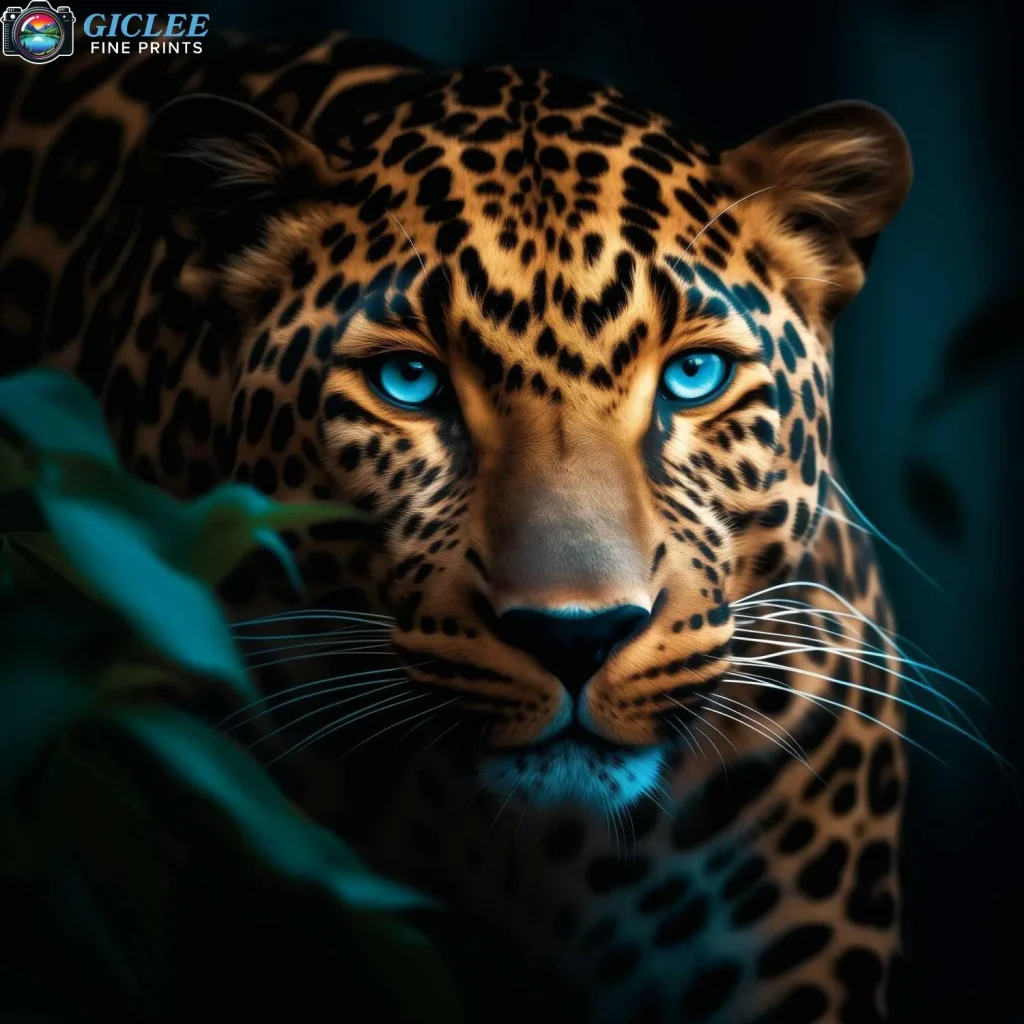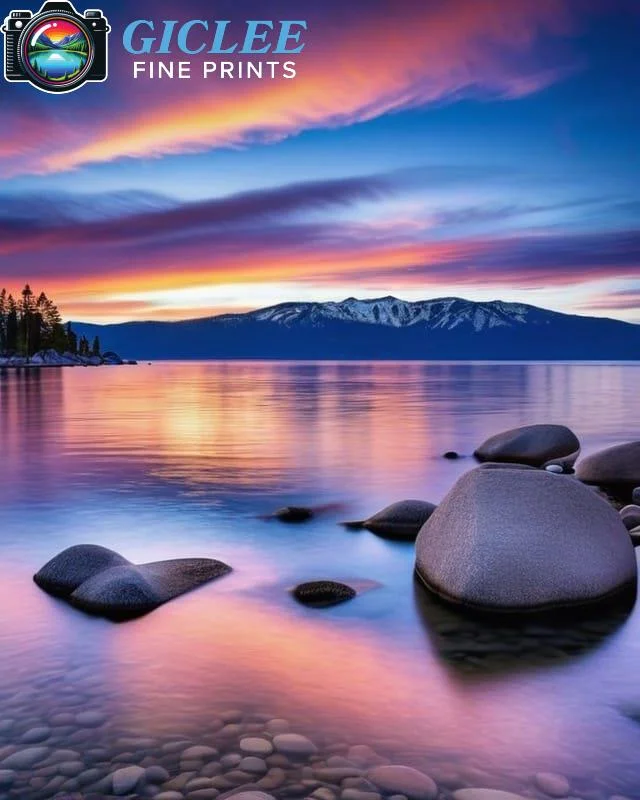
When it comes to printing your artwork or photography, understanding the difference between photography prints and fine art prints is essential to achieving the best results. Each printing method has unique characteristics, suited for different purposes, styles, and display environments. At Giclee Fine Prints, we specialize in both photography and fine art prints, offering premium giclee printing services on a variety of materials such as canvas, fine art paper, and metal prints.
Photography Prints: Capturing Realism with Precision
Photography prints are typically used for displaying digital or film-based photographs in high-resolution detail. The focus of these prints is on color accuracy, sharpness, and clarity, making them ideal for capturing the realism of the original photograph.
Key Features of Photography Prints:
- High Resolution: Photography prints are typically created from high-resolution digital images, ensuring sharpness and clarity even in large formats.
- Color Accuracy: Photography prints aim to capture the exact colors and tones of the original image, making them perfect for portraits, landscapes, and commercial photography.
- Material Options: Photography prints can be produced on a variety of materials, including fine art paper, metal prints, and canvas.
Best Uses:
- Portraits: Photography prints are ideal for detailed portraits that require accurate color representation and fine detail.
- Landscapes and Nature: For realistic depictions of nature, landscapes, and architecture, photography prints offer the precision and sharpness needed to bring these subjects to life.
- Commercial Photography: Photography prints are commonly used in advertising, editorial work, and professional portfolios due to their clarity and color accuracy.
Fine Art Prints: Reproducing Artistic Masterpieces
Fine art prints are reproductions of original artwork, created using advanced printing techniques like giclee to ensure that every detail of the original piece is captured with precision. Fine art prints focus on the artistic quality of the reproduction, maintaining the texture, tone, and depth of the original work.
Key Features of Fine Art Prints:
- Artistic Reproduction: Fine art prints are designed to replicate original artwork, whether it’s a painting, illustration, or digital art. They capture the subtle nuances of the original piece, including brushstrokes, texture, and color variations.
- Archival Quality: Fine art paper and giclee prints are typically made using archival inks and materials, ensuring that the prints last for decades without fading or deterioration.
- Material Options: Fine art prints can be produced on a variety of surfaces, including canvas, fine art paper, and metal prints, depending on the desired finish.
Best Uses:
- Art Reproduction: Fine art prints are ideal for reproducing original artwork in a way that retains the integrity and texture of the original piece.
- Illustrations and Digital Art: Artists looking to produce high-quality, limited-edition prints of their illustrations or digital art will benefit from the precision and detail that fine art prints provide.
- Gallery Displays: Fine art prints are often used in galleries or exhibitions where the focus is on replicating original works of art with museum-quality materials.

Material Options for Photography and Fine Art Prints
Both photography prints and fine art prints can be produced on a variety of materials, each offering different benefits depending on the style and intent of the artwork.
Canvas Prints:
- Texture and Depth: Printing on canvas adds a rich, textured surface that enhances the depth of both photographs and fine artworks. It’s ideal for pieces that need a bold, gallery-style presentation.
- Framing Options: Canvas prints can be framed or left unframed (gallery-wrapped) for a modern, frameless look.
Fine Art Paper:
- Smooth and Detailed: Fine art paper provides a smooth, elegant surface that is perfect for reproducing detailed work. It is often used for fine art prints that require sharp lines and vibrant colors.
- Archival Quality: Fine art paper is typically acid-free and archival, ensuring that the prints remain vibrant for decades.
Metal Prints:
- Bold and Contemporary: Metal prints are perfect for modern photography and fine art. They offer a glossy finish that enhances contrast and color saturation, giving the artwork a sleek, contemporary look.
- Durable and Waterproof: Metal prints are highly durable, scratch-resistant, and waterproof, making them ideal for outdoor displays or high-traffic areas.
Differences in Print Longevity
Both photography prints and fine art prints are designed to last, but the materials and printing processes used can affect their longevity.
Photography Prints:
- Fade Resistance: High-quality photography prints made using archival inks on fine art paper or metal prints can last for decades without fading, especially if they are protected from direct sunlight.
- Durability: Photography prints on metal or canvas are durable and suitable for environments where they may be exposed to moisture or handling.
Fine Art Prints:
- Archival Quality: Fine art prints created using giclee printing are made with archival inks and materials, ensuring that they last for generations without fading or deteriorating.
- UV Protection: Fine art prints can be enhanced with UV-resistant coatings, especially on canvas or fine art paper, to protect the artwork from sunlight exposure.

Customization Options for Display
Both photography and fine art prints offer a wide range of customization options, allowing you to tailor the presentation of your artwork to suit your style and space.
Framing Options:
- Canvas: Canvas prints can be framed with a floater frame to give the artwork a professional, gallery-style presentation, or left unframed for a contemporary look.
- Fine Art Paper: Fine art paper prints are often matted and framed with UV-protective glass for long-lasting preservation.
- Metal Prints: Metal prints are typically frameless, creating a sleek, modern display that works well in contemporary environments.
Mounting and Hanging:
- Peel and Sticks for Walls: For temporary or flexible display options, peel and sticks for walls offer an easy-to-install, damage-free way to showcase both photography and fine art prints.
- Posters on My Wall: Poster-style prints on fine art paper are a more affordable option for both photography and fine art, perfect for casual home displays.
Contact Us
Our address is: 3816 Pioneer Trail Ste #3, South Lake Tahoe, CA 96150
Email: Info@gicleefineprints.com
FAQs
Fine art paper or canvas are the most common materials for fine art prints, offering both archival quality and vibrant color reproduction.
Yes, metal prints offer a contemporary, bold look and are ideal for modern fine art or photography with high contrast and vibrant colors.
Both can last for decades or longer when made with archival-quality materials and displayed under proper conditions.


